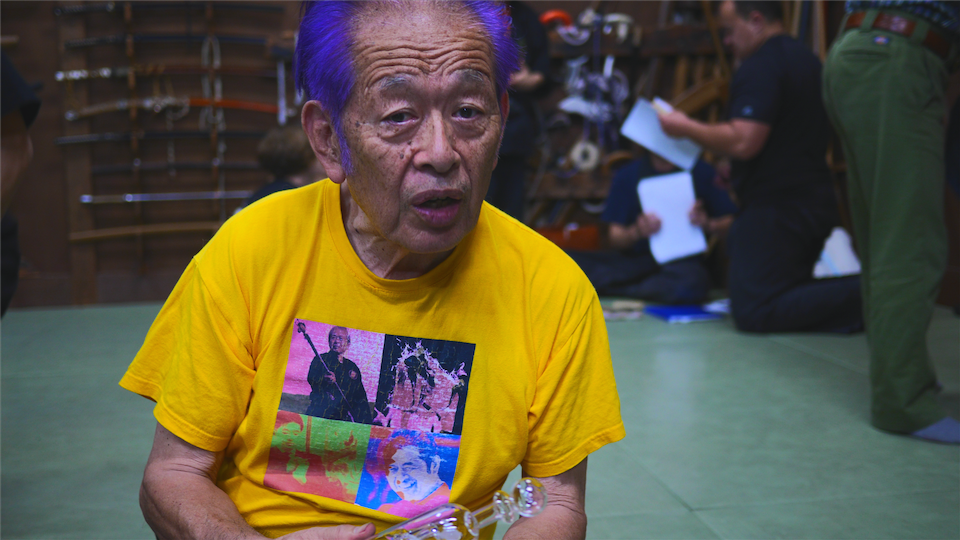Everybody uses 合掌の構 Gassho no Kamae for Prayer, But in the Bujinkan We Fight With It
From Bujinkan Santa Monica by Michael
 |
| Rainy Day Gassho at 霊巌寺 Reigan-ji, Koto, Tokyo. photo by Michael Glenn |
That night, as I recorded a training video about this for Rojodojo.com, I wanted to share even more about gassho with everybody. So what I show in the video is that there is much more to this humble kamae then you might think. But if you want to know what mysteries are bound up with this stance, keep reading.
Gassho is a general term that describes any form that brings the hands together, often in a form of prayer or reverence. In the Bujinkan the symbolism of this kamae runs deep. And the position is even sometimes called 金剛拳 kongo ken and it is used to strike or even conceal weapons.
In Buddhism the right hand represents the Buddha, and the left represents you (or all sentient beings). They come together, and one becomes the other. Some different types of gassho include 堅実心合掌 steady heart gassho, 虚心合掌 relaxed, open minded gassho, and 金剛合掌 kongo gassho (vajra, diamond thunderbolt of indestructible truth).
Each finger represents an element. Gassho no kamae holds the unity of chi, sui, ka, fu, ku in your hands. Then you rip that unity apart as the attacker enters. This feels like a void opens and the attacker falls in. But you are really expanding the unity to engulf the opponent until he is no longer an adversary.
If he continues to fight in this space, he will not survive.
You may not know that one form of gassho often shown in Bujinkan kata is called Baku-in 縛印 or 縛拳 baku ken and it comes from Mikkyo. This is a form of “binding,” tying a spirit body or physical body down so they become trapped in a form of paralysis. But it is also for collecting yourself to bind or set your own resolve.
Then the kamae becomes 子持虎の構 komochi-tora no kamae. Hatsumi Sensei told us to start with kongo gassho, where you are unified with the whole universe. This is not a fighting stance. It is the tiger protecting her cubs. Your opponent will see it in your eyes.
Set your mind on perseverance. But if the attack comes, watch out! It can flip like the child holding the tiger.
Gassho no kamae unifies all of the universe within you. Then when you receive the attack, you tear this unity apart into a duality. Like ripping apart yin and yang, or 陰 in and 陽 yo. And that is the large void that the attacker is sucked into.
But you cannot really divide yin and yang. They cannot ever be ripped apart. That is like making the sound of 忍び手 shinobi te, a type of silent clapping, or bringing the hands together without making a sound. What do you hear in silence?
What really happens from gassho no kamae? It expands the unity within yourself to include even more. The attack, the defense, nature, even Kami… All included within the space. This is Shingin Budo.
As you expand like this, all of your ego, strategy, preconceptions, muscle or force, and technique grow smaller and smaller. The more you expand and allow into yourself, the less important and useful they are. You empty yourself more and more to make room.
During all of my trips to Japan last year, Hatsumi Sensei asked us to allow Shingin Budo to fill up this empty space in the void, in the kukan, and in ourselves. But even Soke cannot show you how. Each person has to find their own path to get to that open place.
Clap your hands everybody, and everybody just clap your hands.
